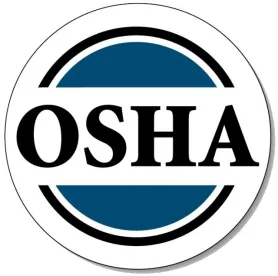On June 10, 2021, fifteen months into the COVID-19 pandemic, the United States Labor Department’s Occupational Safety and Health Administration (“OSHA”) has issued its first ‘emergency temporary standard’ (“ETS”) governing the impact of COVID-19 on health care workers.
The ETS broadly requires healthcare employers to conduct an internal safety assessment and develop a safety plan, which must be in writing for all employers with more than 10 employees. The ETS further delineates requirements relating to patient screening and management, health precautions, masks and PPE, aerosol-generating procedures, physical distancing, physical barriers, cleaning and disinfection, ventilation, health screening, vaccination, employee training, anti-retaliation, record-keeping, reporting occurrences of COVID-19 transmission, and paying employees for periods of quarantine. Consistent with recent CDC guidance, the ETS also contains carve outs on employee mask-wearing requirements where employees are all vaccinated or where employees are given reasonable accommodations exempting them from mask-wearing and/or vaccination requirements.
The 916 page ETS will take effect on the date that it is published in the Federal Register, which has not yet been determined. After publication, employers will be expected to come into compliance with most rule provisions within 14 days, although OSHA has expressed a willingness to defer enforcement action against employers who are making a “good faith effort” to meet all relevant deadlines.
OSHA estimates that the ETS will cover approximately 10.3 million people. This scope is considered insufficient by organized labor. Unions such as the AFL-CIO, United Food & Commercial Workers International (“UFCW”), and other worker safety advocates have expressed disappointment and concern about the rule’s exclusive focus on the healthcare industry. For example, UFCW International President Marc Perrone expressed that the ETS “represents a broken promise to the millions of American workers in grocery stores and meatpacking plants.” Perrone’s comment is likely based on the Biden Administration’s January 21, 2021 “Executive Order on Protecting Worker Health and Safety” which tasked OSHA with taking action to protect not only healthcare workers, but all other essential workers, as well.
OSHA provided updated guidance for non-healthcare industries alongside the ETS, entitled “Protecting Workers: Guidance on Mitigating and Preventing the Spread of COVID-19 in the Workplace.” This guidance encourages COVID-19 vaccination and focuses on “unvaccinated and otherwise at-risk workers.” Significantly, the executive summary of the guidance states that “most employers no longer need to take steps to protect their fully vaccinated workers who are not otherwise at-risk from COVID-19 exposure.”
In response to this guidance, AFL-CIO President Richard Trumka commented that “voluntary guidelines are not enough. Workers need enforceable protections to prevent the spread of the virus . . .” Although Trumka is correct that this guidance is purely that—guidance, not a legal requirement—employers face legal risks if they ignore this guidance. OSHA uses its guidance when evaluating whether employers have met their general duty clause obligation to provide workplaces free from recognized hazards. Also, OSHA and CDC guidance has been used as the minimal standard of care for negligence purposes. Wrongful death and negligent injury lawsuits by employees against their employers based upon COVID-19 are still being decided in many jurisdictions, and while many of these lawsuits are likely to be dismissed under worker’s compensation statutes, outcomes may differ based upon jurisdictions and fact-specific considerations. Also, some states recognize “take home” claims where other members of the employee’s household can bring a negligence action that may not be excluded by workers’ compensation.
A common theme throughout the ETS and the guidance is that an employer’s COVID-19 risk mitigation compliance burden is in inverse relation to its vaccinated employee percentages. As such, employers should seriously consider the relative risks and benefits of mandating vaccination so long as not otherwise prohibited by state law, or at least crafting and implementing programs encouraging vaccination. The EEOC has advised that mandatory vaccine requirements can be implemented in a legally-compliant manner, so long as carve outs are made for disability and religious accommodation. This approach does risk litigation, however. Employers in California, Texas, New York, and New Mexico currently are facing lawsuits in connection with vaccine mandates. These cases appear to be of questionable merit; but, many employers are hesitant to mandate vaccination for fear of becoming a litigation target.
Finally, employers must remain vigilant regarding state specific requirements. State plan OSHA states must have requirements at least as stringent as federal OSHA requirements. A number of state plan states already have ETSs in place; Virginia’s standard is permanent. Also, some Governors still have Executive Orders that differ from federal guidelines and the new ETS. Employers seeking to update existing COVID-19 policies and procedures are advised to consult with counsel or other trusted advisors so they can ensure compliance with all applicable law, regulation, and guidance.






 />i
/>i

